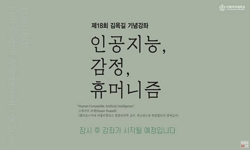(연구배경 및 목적) 언어와 조형은 인간의 감정을 표현하고 소통하는 주요 수단임에도 불구하고, 둘 간의 직접적인 변환과 연계에는 어려움이 존재한다. 그러나 최근 인공지능 기술의 발달...
http://chineseinput.net/에서 pinyin(병음)방식으로 중국어를 변환할 수 있습니다.
변환된 중국어를 복사하여 사용하시면 됩니다.
- 中文 을 입력하시려면 zhongwen을 입력하시고 space를누르시면됩니다.
- 北京 을 입력하시려면 beijing을 입력하시고 space를 누르시면 됩니다.

텍스트의 감정 분석 기반 조형 시각화 방법 연구 - VAD 감정 차원과 조형 언어 사전을 중심으로 - = A Study on Visualization Methods for Form Based on Text Sentiment Analysis - Focusing on VAD Emotion Dimensions and Design Lexicon -
한글로보기https://www.riss.kr/link?id=A109220037
- 저자
- 발행기관
- 학술지명
- 권호사항
-
발행연도
2024
-
작성언어
Korean
-
주제어
Form Language ; Sentiment Analysis ; Basic Form ; Artificial Intelligence ; Emotion Lexicon ; 조형언어 ; 감정분석 ; 기초조형 ; 인공지능 ; 감정사전
-
등재정보
KCI등재
-
자료형태
학술저널
- 발행기관 URL
-
수록면
11-24(14쪽)
- 제공처
-
0
상세조회 -
0
다운로드
부가정보
국문 초록 (Abstract)
(연구배경 및 목적) 언어와 조형은 인간의 감정을 표현하고 소통하는 주요 수단임에도 불구하고, 둘 간의 직접적인 변환과 연계에는 어려움이 존재한다. 그러나 최근 인공지능 기술의 발달로 자연어를 기반으로 한 조형 생성에 관심이 높아지면서, 언어와 조형의 상호 연결 가능성에 대한 탐색이 활발히 이루어지고 있다. 본 연구는 텍스트의 감정 분석을 기반으로 한 시각화 방법을 제안하는 것을 목적으로 한다. 이를 위해 감정 분석 기술을 활용하여 텍스트의 감정을 Valence, Arousal, Dominance의 차원으로 구조화하는 VAD 모델을 적용하였다. 텍스트에 내재된 감정을 정량화하고 이를 조형 언어로 변환함으로써, 기존의 직관 기반 조형 생성 방식과 차별화된 감정 기반 조형 생성 방법론을 모색하고자 하였다. (연구방법 및 범위) 연구를 위해 첫째, 문헌 연구로 언어와 조형의 관계, 그리고 감정을 매개로 한 언어-조형 연결 가능성에 대해 고찰한다. 둘째, VAD 모델에 대해 심층적으로 검토하고, 이를 토대로 텍스트 감정 분석 및 조형 변환 방법론을 설계한다. 셋째, 선행 연구와 관련 자료를 바탕으로 조형 언어 데이터셋을 구축하고, VAD 감정 차원과 조형 요소를 연계한 조형 언어 사전을 제작한다. 넷째, 대중가요 가사를 대상으로 텍스트 전처리, 감정 분석, 조형 언어 변환, 이미지 생성의 일련의 과정을 수행하는 조형 생성 실험을 진행한다. 다섯째, 실험 결과를 바탕으로 제안 방법론의 효용성과 한계점을 논의하고, 후속 연구 방향을 제언한다. (결과) 실험 결과, VAD 감정 모델과 조형 언어 사전을 활용한 시각화 방식은 텍스트의 감정과 분위기를 일관성 있게 반영할 수 있음을 확인하였다. VAD 기반 방식은 동일한 텍스트에 대해 유사한 스타일의 이미지를 생성한 반면, 기존 방식은 다양한 스타일의 이미지를 생성하였으며 텍스트-이미지 간 감정적 연계성이 상대적으로 약했다. 다만 VAD 모델의 단순한 감정 분류와 조형 언어 사전의 제한적 표현력이 한계점으로 관찰되었다. (결론) 본 연구는 감정이라는 매개체를 통해 언어와 시각을 연결함으로써 인간의 감성에 부합하는 조형 콘텐츠 생성에 기여할 수 있음을 시사한다. 제안된 텍스트 감정 분석 기반 시각화 방법은 예술 및 디자인 분야의 창의적 실천에 새로운 관점을 제시함은 물론, 인간과 AI의 협력적 창작 가능성을 열어줄 것으로 기대된다.
다국어 초록 (Multilingual Abstract)
(Background and Purpose) Despite the pivotal role of language and form as mediums for expressing and communicating human emotions, significant challenges remain in terms of direct transformation and linkage. Nevertheless, with recent developments in a...
(Background and Purpose) Despite the pivotal role of language and form as mediums for expressing and communicating human emotions, significant challenges remain in terms of direct transformation and linkage. Nevertheless, with recent developments in artificial intelligence technology and a growing interest in natural language-based form generation have led to an increased exploration of the potential for interconnection between language and form. This study aims to propose a visualization method based on text sentiment analysis. To achieve this, the VAD (Valence, Arousal, Dominance) model was applied to structure the emotions in the text using sentiment analysis techniques. By quantifying the emotions inherent in the text and converting them into visual form, this research seeks to differentiate from existing intuition-based form generation methods and explore a sentiment-based form generation methodology. (Methods) This study involved several key steps. First, a literature review was conducted to examine the relationship between language and visual form and the potential for linking them through emotions. Second, the VAD model was thoroughly reviewed and used as the basis for designing a methodology for text sentiment analysis and form transformation. Third, a visual form language dataset was constructed based on previous research and related materials, and a form language dictionary was created linking VAD emotion dimensions to form elements. Fourth, a form generation experiment was conducted using popular song lyrics, involving text preprocessing, sentiment analysis, form language transformation, and image generation. Finally, the effectiveness and limitations of the proposed methodology were discussed based on the experimental results, and directions for future research were suggested. (Results) The experimental results corroborated the efficacy of the visualisation method utilizing the VAD emotion model and the formative language dictionary in consistently reflecting the emotions and atmosphere of the text. The VAD-based approach generated images with analogous styles for the identical text, whereas the existing approach produced images with various styles and showed relatively weak emotional connectivity between the text and the images. However, the simple emotion classification of the VAD model and the limited expressiveness of the formative language dictionary were observed as limitations. (Conclusion) The findings of this study indicate that integrating emotional content into language and visuals can facilitate the development of form and content that resonates with human sensibilities. The proposed visualization method, based on text sentiment analysis, offers a novel perspective for creative practice in the fields of art and design. Furthermore, it provides a potential avenue for collaborative creation between humans and AI.
동일학술지(권/호) 다른 논문
-
라이프스타일 브랜드의 옴니채널 전략에 따른 오프라인 공간 연구 -고객 경험 특성을 중심으로-
- 한국공간디자인학회
- 한상미
- 2024
- KCI등재
-
- 한국공간디자인학회
- 이은영
- 2024
- KCI등재
-
- 한국공간디자인학회
- 이명아
- 2024
- KCI등재
-
공동체주택의 지속가능성 평가요소의 집단 간 가중치 비교
- 한국공간디자인학회
- 이명아
- 2024
- KCI등재
분석정보
연관 공개강의(KOCW)
-

[제18회 김옥길기념강좌] 인공지능, 감정, 휴머니즘(Human-Compatible Artificial Intelligence’)’
이화여자대학교 스튜어드 러셀 -

누구나 할 수 있는 데이터 분석과 인공지능[Data Analysis and Artificial Intelligence for Everyone]
K-MOOC 인하공업전문대학 이세훈 -

누구나 할 수 있는 데이터 분석과 인공지능[Data Analysis and Artificial Intelligence for Everyone]
K-MOOC 인하공업전문대학 이세훈 -

인공지능 응용 실습
금오공과대학교 임완수 -

재미있게 이해하는 인공지능(AI)시대의 주요 이슈
동아대학교 손판도




 KCI
KCI KISS
KISS

